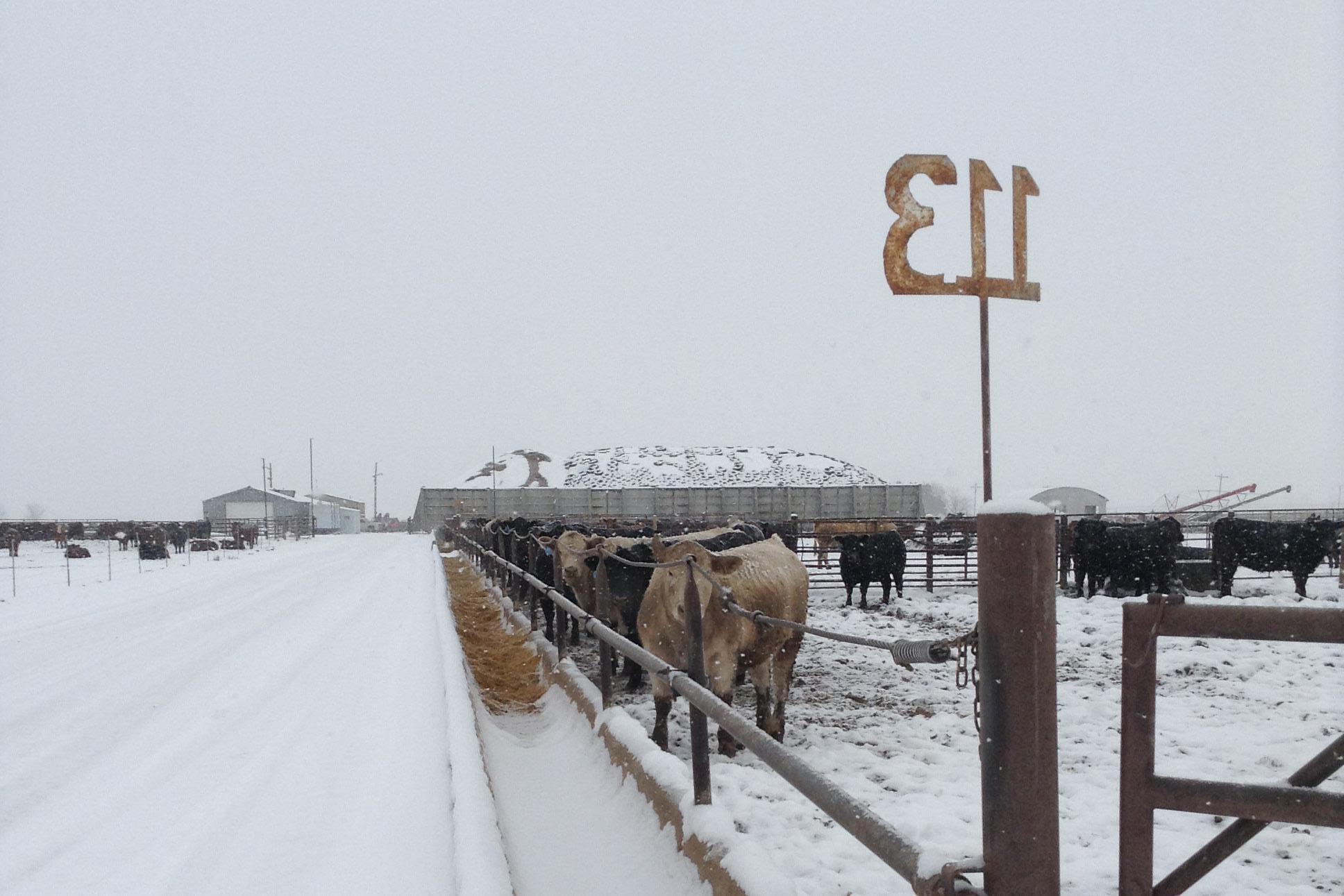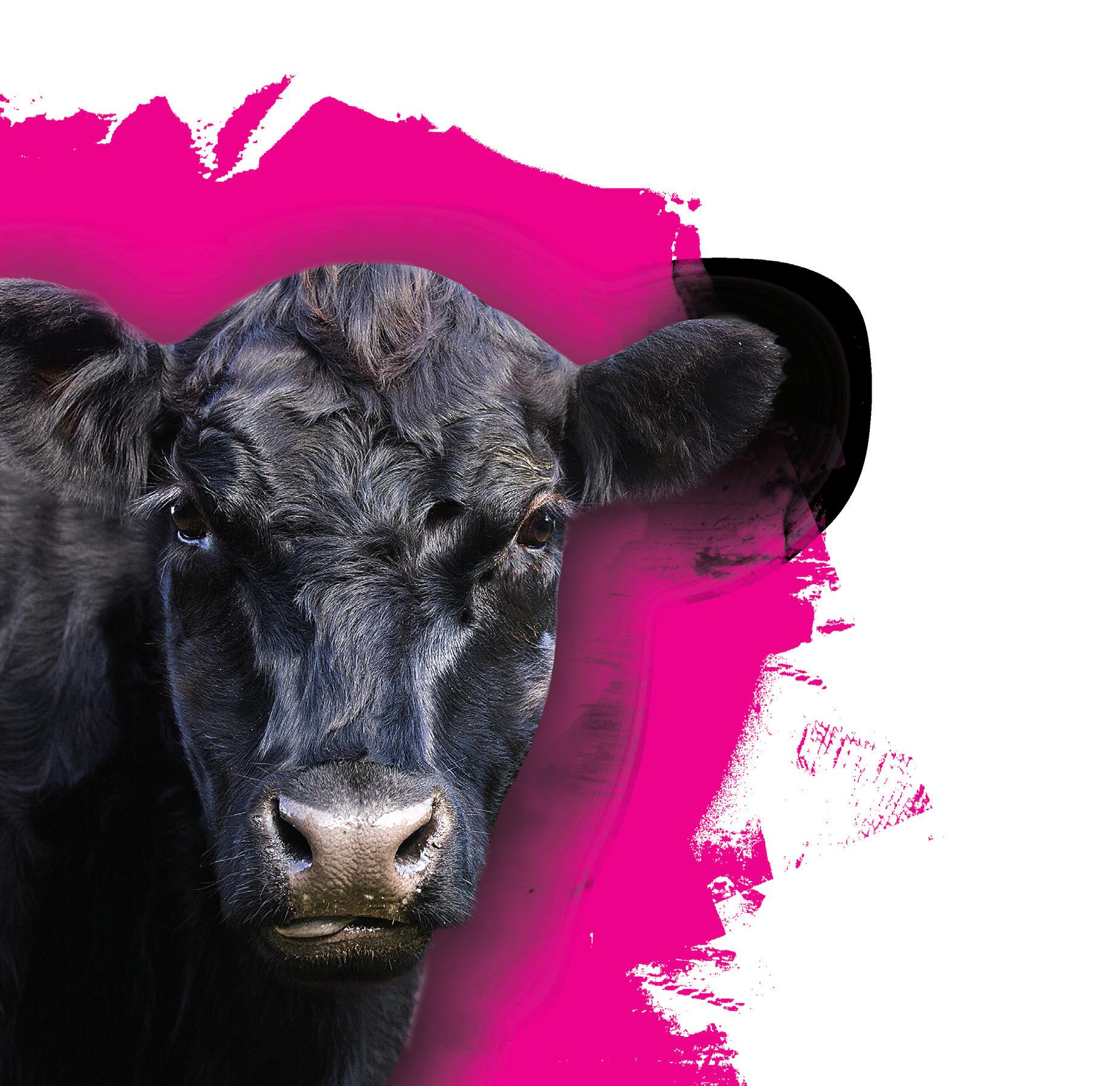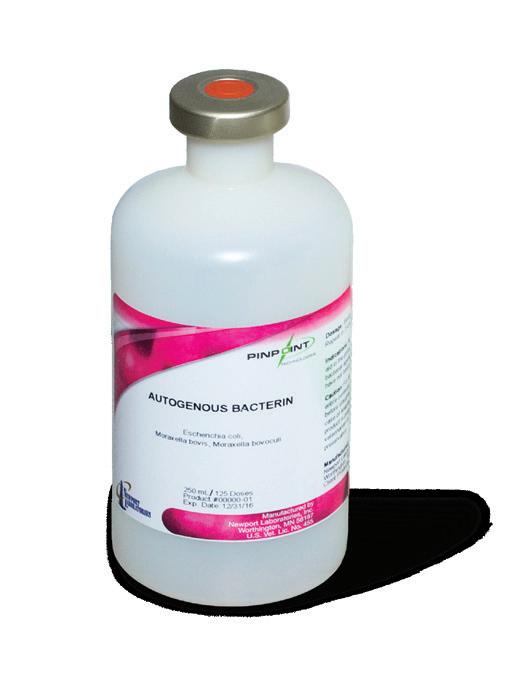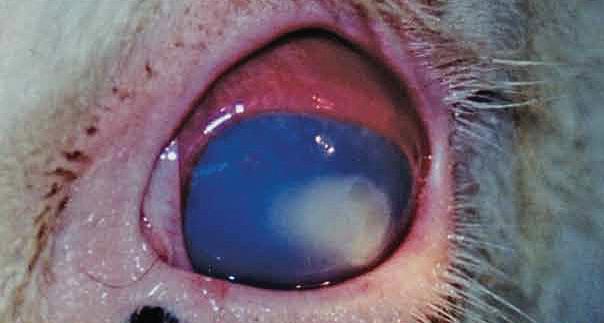
5 minute read
Winter 2017 - 2018
Bilingual Training
OTHER BRD TREATMENTS WERE 50% AS EFFECTIVE AS DRAXXIN® IN SEVERAL STUDIES.
Treat bovine respiratory disease (BRD) the right way with DRAXXIN® (tulathromycin) Injectable Solution. DRAXXIN demonstrated 50% fewer re-treats and 50% fewer dead or chronic animals1 versus competitive products in several large pen studies.2 Which means your cattle stay healthier, and that helps keep your bottom line healthier, too. Get the numbers on DRAXXIN at draxxin.com.

BRD
Solutions
FROM ZOETIS
IMPORTANT SAFETY INFORMATION: DRAXXIN has a pre-slaughter withdrawal time of 18 days in cattle. Do not use in female dairy cattle 20 months of age or older. Do not use in animals known to be hypersensitive to the product. See Brief Summary of Prescribing Information on adjacent page and full Prescribing Information at draxxin.com/pi.
Welcome to Protein Producers! The end of one year and the beginning of another allows us to reflect on our happenings but also look towards the start of a new chapter in the beef industry. As we look forward to 2018, we also want to remember the loved ones lost and count the many blessings granted to us in 2017. This magazine is about being a part of a special family dedicated to producing food for mankind. Raising animals for food is a privilege afforded to very few people in this world today. We at Production Animal Consultation consider it a humbling honor to work with you in this journey.
This year the industry had strong focus on antibiotics in beef cattle production. It was the first year that we were required to have Veterinary Feed Directives for the use of feed grade antibiotics. The industry and the veterinary profession worked very hard together to make this a smooth transition. While some have questioned the initiation of the VFD program, we at PAC consider this to be another positive step forward in a long story of advancements in responsible antibiotic use. From the 1980s when the HACCP-based Beef Quality Assurance program was launched to prevent antibiotic residues in finished cattle, to the industry’s voluntary ban on the use of gentamicin, to the development of an extra-label drug use plan, the VFD is another step forward in helping preserve technology for the health and well-being of cattle.
PAC veterinarians have spent numerous hours and thousands of dollars to help develop a database that tracks antibiotic usage and the efficacy of these antibiotics in feedlot cattle. In partnership with our clients and others involved in beef cattle production from the pasture to the plate, PAC is dedicated to continuing to use antibiotics in a responsible manner while not only preventing antibiotic residues but also preventing antibiotic resistance.
Sustainability has been a term used loosely by many different people surrounding the beef industry. The first question one must ask is, “What do you want to sustain?” The dictionary says sustainability is the ability to be sustained, supported, upheld or confirmed. It is mostly tied back to ecology, the planet’s health and environmental indicators. However, it means different things to different people depending on where you sit. Is it the sustainability of humankind? Is it the sustainability of the people in your country? Your individual commodity industry? Is it your corporation’s sustainability? How about the sustainability of your household spendable income? Do you practice in your personal life what you represent in your professional life? Sustainability of livestock production has individual, operation, local, state, national and international definitions and for every complex problem there is a simple answer and it is wrong.
“Life is like riding a bicycle. To keep your balance you must keep moving,” said Albert Einstein. Sustainability is a balance. It never sits still and it is complex. Economics, food safety, food security, environmental responsibility, animal health, human health and so much more must be measured constantly and kept in balance. The more I read about sustainability, globalization and climate change, the more I am certain that environmental changes will have more impact on the production of livestock than livestock production will have on environmental change.
Poverty in this country is determined by tripling the inflation-adjusted cost of minimum food diet in 1963. It is adjusted for the number of people and the age of the household occupants. Removal or discontinued use of technology, antibiotics, management, or housing without evidence-based or outcome-based decisions will have lasting effects on society. If food prices go up with no changes in incomes, poverty increases. Reliance on food stamps increases. The value of our tax dollar decreases. This is not just an agriculture sustainability issue; it is a societal sustainability issue. The rich can afford to err on the side of safety and drive misinformed legislation by funding movements to save the planet. The poor just need to eat. Retailers must have patience and use sustainability modeling prudently. Getting this right is so important. Most people literally can not afford for us to get it wrong. PAC is working with groups to help get this right through animal health, food safety and other beef cattle production research projects.
Our globe’s climate is going to change. Water availability is going to change. We will be able to grow crops in different areas of the world, maybe in another world. New disease outbreaks will occur. Population centers are going to change. People’s tastes are going to change. Therefore, where and how food is produced is going to change over time. We are all in this together to preserve our beef industry heritage while constantly looking for future improvements to keep beef in the middle of the dinner plate and assure future generations can continue our traditions.
Here’s to kicking off 2018 and wishing you all the very best.

- Dan Thomson, PhD, DVM



Contributors
Thank you to all those contributing multiple stories and insights to Protein Producers.
Jacob Mayer
Jacob Mayer is a Project Engineer for Settje Agri-Services & Engineering (www.settje. com) located near Raymond, NE. He is a licensed Professional Engineer and has a B.S. in Agricultural Engineering from Iowa State University and M.S. in Biological Engineering from Mississippi State University. He resides in rural Weston, NE with his wife, Katie, daughter, Kirkland, and son, Hatten. He does not wear a pocket protector and does not know how to use a slide rule.
Cover Photo Credits
The Pot Roast
We want to showcase the talented chefs that read our magazine. In this issue we are featuring Arturo and Wrenn Pacheco who run cattle in the Flint Hills of Kansas while also maintaining a fun and unique cooking blog which can be found at cookingwiththe cowboy.com. If you have a recipe that you would like to feature in The Pot Roast section of the magazine, please email us at kelly.terrell@pacdvms.com. Our goal is to continue discovering recipes from agriculture’s finest.
Thank you to Dean McMillan for the cover pictures that were taken in Montana. More of Dean’s pictures can be found on the website mcmillancattle.com and he can be reached via email at dean@dx4photo.com.
Sponsors
Thank you to all sponsors for supporting PAC & Protein Producers.
Alltech
Bayer
Chr. Hansen Daniels Manufacturing Co. Diamond
Midwest NetPro
Newport Laboratories
Norbrook
Elanco
Lallemand
Micro Technologies
SSG Fusion
Zinpro
Zoetis










